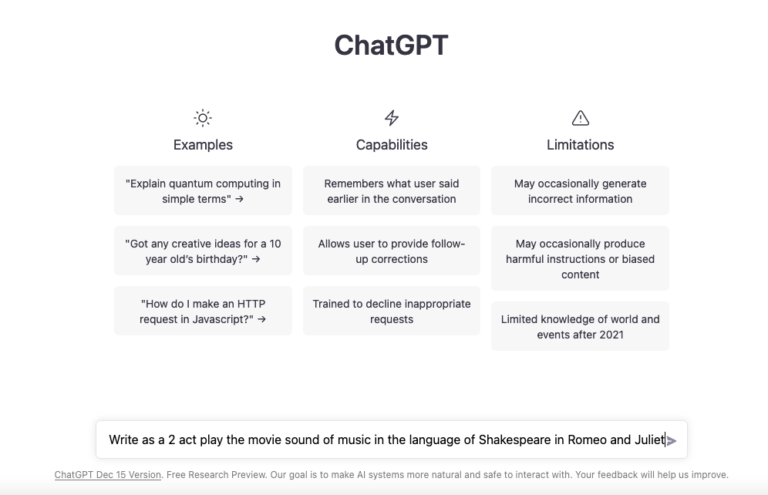A friend of mine refers to SEO as being as essential for a website as exercise is for the human body. You can neglect SEO for a time and coast along like you can without exercising for a time. However, just as regular exercise is essential to stay fit, a consistent focus on SEO is absolutely vital for your website to keep fit and continue to rank high on Google SERPs.
Dentists are busy professionals. They are generally clinicians first and foremost. Next, they are marketers and administrators for their dental office business, much later in terms of the focus of their priorities.
Yet dentists need to understand what actually goes into SEO so that SEO does not remain a black box of esoteric terms that an SEO or marketing consultant alone understands. SEO is actually quite simple. Returning to that example about exercising, the trick lies in exercising consistency and how many muscle groups you exercise!
This note will briefly explain the following:
– What is SEO?
– Is there a hierarchy of steps in SEO?
– What are some key terms in the business of SEO, and what do they mean?
– What do you mean by the need for consistent focus and effort to get SEO right?
What is SEO?
Let us take a step back; there are about 2 billion websites in the world today; why should Google display your website on page-1 of its search engine results page (SERP)?
Search Engine Optimization (SEO) is the science and art of getting your website to display on page-1 or close to page-1 of Google SERPs whenever a visitor to Google has a query about a service that your business can deliver.
The Hierarchy of SEO tasks
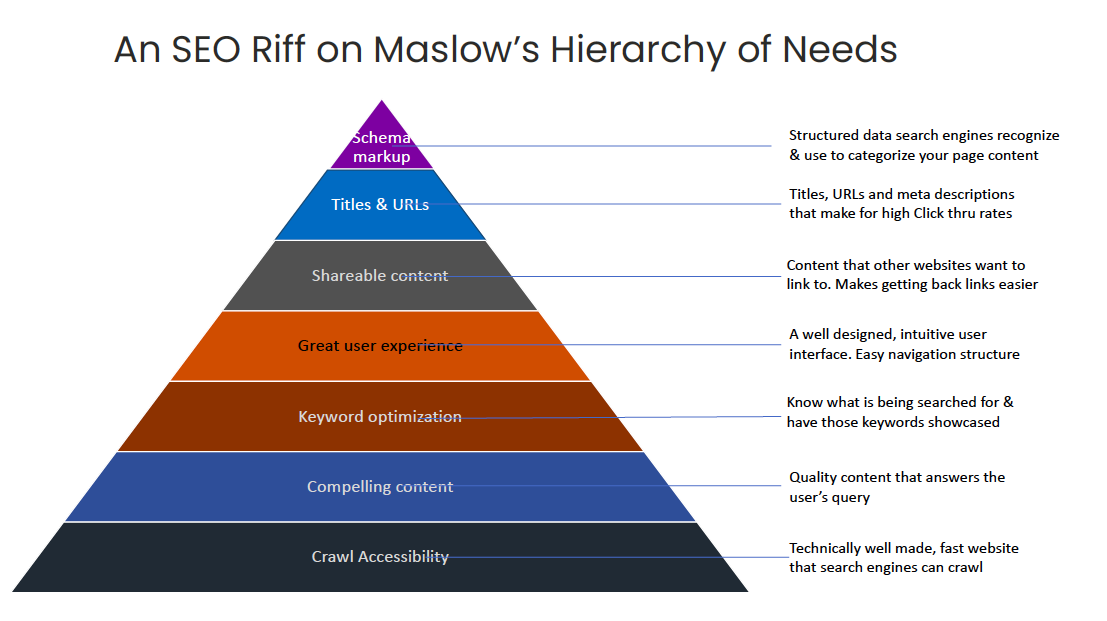
We are all familiar with Maslow’s Hierarchy of human needs, from food and shelter to self-actualization, right at the top of the pyramid.
Interestingly SEO does have a hierarchy of steps that you can use to build up your website’s SEO and, therefore, its Domain Authority. Moz developed this Hierarchy of needs in SEO.
Here are the steps in a hierarchy of SEO needs:
Here are the steps in a hierarchy of SEO needs:
1. Crawl Accessibility: Crawl accessibility refers to the ease with which search engine bots can navigate and analyze a website’s content. It is critical for SEO because if search engines cannot effectively crawl a website, then the search engine bots may not index the pages and information on this website. And a consequence is that your website does not appear in search results.
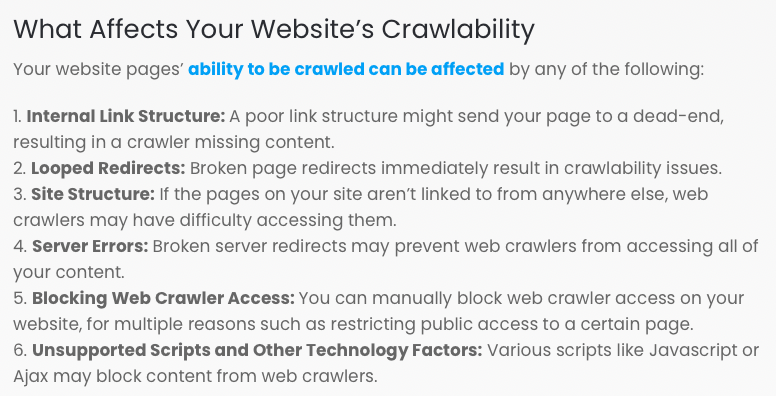
A website that is crawl accessible ensures that search engine bots can quickly discover and understand its content, leading to better visibility and higher rankings. By optimizing crawl accessibility through techniques such as clear site structure, proper URL formatting, and optimized metadata, websites can improve their chances of being indexed and appearing in relevant search results.
2. Compelling content: Compelling content refers to website content that is engaging, valuable, and relevant to the target audience. It captures visitors’ attention, delivers useful information, and encourages them to take desired actions.
Compelling content is critical for SEO because it attracts and retains visitors, increases user engagement, creates longer session durations, and lower bounce rates. When users find content compelling, they are more likely to share, link to, and reference it, which improves a website’s visibility and authority in search engine rankings.
By creating high-quality, compelling content that meets user needs and aligns with search intent, websites can enhance their SEO performance and drive organic traffic.
3. Keyword optimization: Keyword optimization of a website involves strategically incorporating relevant keywords into its content, meta tags, headings, and URLs to improve search engine visibility.
It is vital for SEO because keywords act as signals for search engines to understand the purpose and relevance of a webpage. Whether or not your keywords are meaningful (have search volume) can be determined with a tool like Ahrefs as the example below shows:
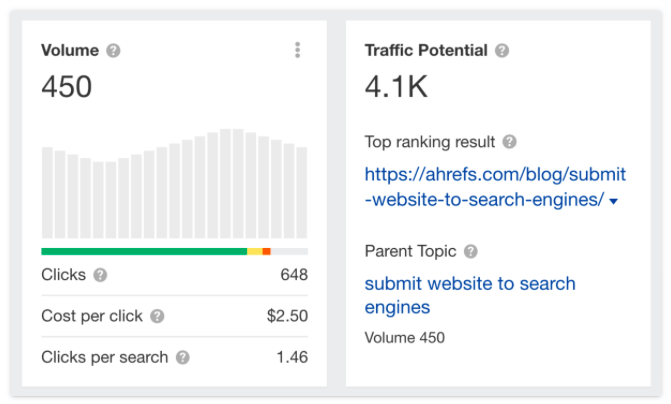
Therefore, websites can better match user search queries by conducting thorough keyword research and optimizing website elements, such as titles, descriptions, and body text.
This optimization helps search engines accurately interpret and rank the website’s content, resulting in improved organic search visibility, targeted traffic, and higher chances of attracting potential customers or users actively seeking the information or products offered.
4. Great User Experience: A website’s excellent user experience (UX) refers to the overall satisfaction and ease of use visitors experience while interacting with the site. It involves intuitive navigation, fast loading times, mobile-friendliness, clear and readable content, appealing design, and practical functionality.
A great user experience is critical for SEO (Search Engine Optimization) because search engines prioritize user satisfaction and engagement. The following are 20 usability guidelines by Susan Weinschenk and Dean Barker. 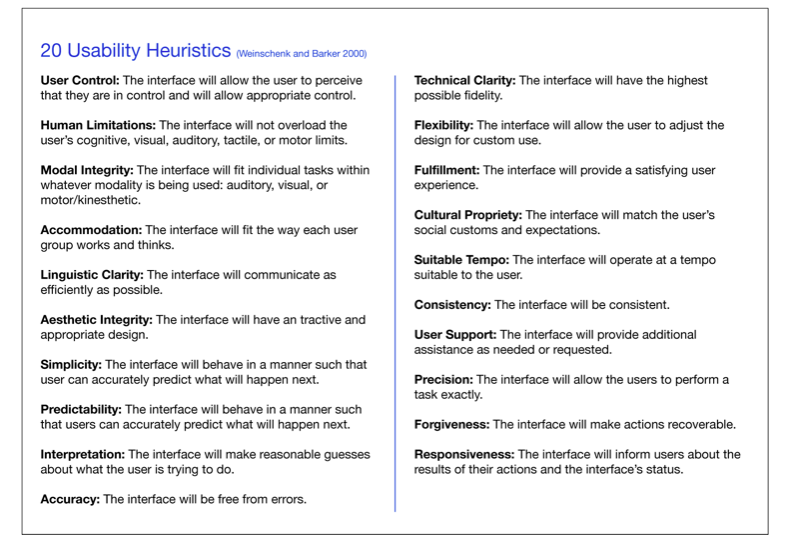
Websites with a positive user experience tend to have lower bounce rates, longer session durations, and higher conversion rates.
Additionally, user experience signals, such as click-through rates and dwell time, can influence search engine rankings.
By prioritizing excellent user experience, websites can improve their SEO performance and attract more organic traffic.
5. Shareable content: Shareable content refers to website content that is highly engaging, valuable, and easily shareable across various online platforms and social media channels.
It is essential for SEO because when users share content, it increases its visibility and exposure to a broader audience.
Shareable content generates more backlinks, social signals, and online mentions, which is essential for search engine rankings. In fact, according to Semrush’s State of Content Marketing 2023 Report, while Video is increasingly a clear winner, 55% of content marketers reported that short-form articles or long-form blog posts were among the top performers of all content types.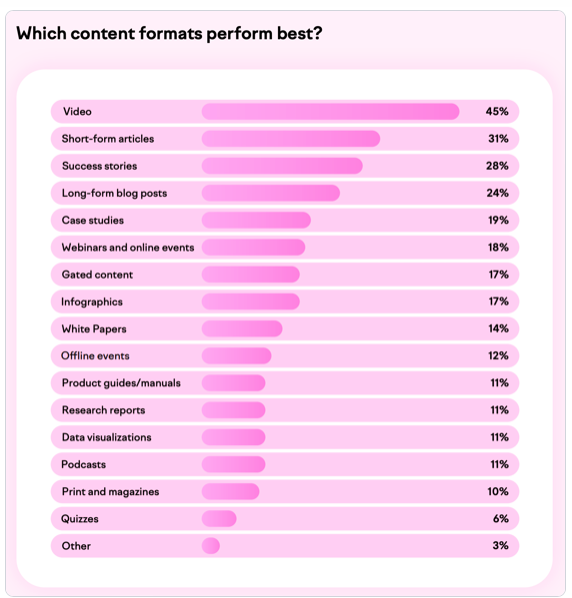
Moreover, when content is shared and linked to reputable sources, it enhances the website’s authority and credibility.
By creating shareable content that resonates with users and encourages them to share it, websites can amplify their SEO efforts and attract organic traffic from diverse sources.
6. Titles & URLs: Titles, URLs, and meta descriptions are important elements of a website’s on-page optimization for SEO (Search Engine Optimization).
Titles: These are HTML tags that define the title of a webpage. They appear as clickable headlines on search engine results pages. Optimized titles should be concise and descriptive and include relevant keywords to attract search engine bots and users. 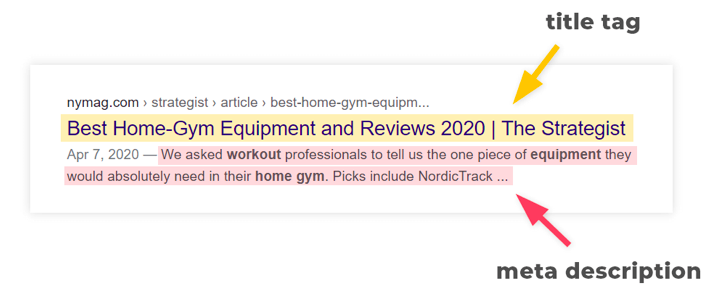
URLs: These are the addresses that specify the location of web pages. SEO-friendly URLs are short and descriptive and include keywords to provide search engines and users with a clear understanding of the page’s content.
Meta Descriptions: These HTML tags briefly summarize a webpage’s content. Well-crafted meta descriptions should be compelling and informative and include relevant keywords to entice users to click through from search results.
These elements are critical for SEO as they directly impact search engine rankings and click-through rates. Optimizing titles, URLs, and meta descriptions helps search engines understand a webpage’s content and relevancy and entices users to visit the website.
7. Schema Markup: Schema markup refers to structured data markup that is added to a website’s HTML code to provide search engines with additional context and information about the content on the page.
It uses a standardized vocabulary to define and categorize different elements on the website, such as products, events, reviews, and more. 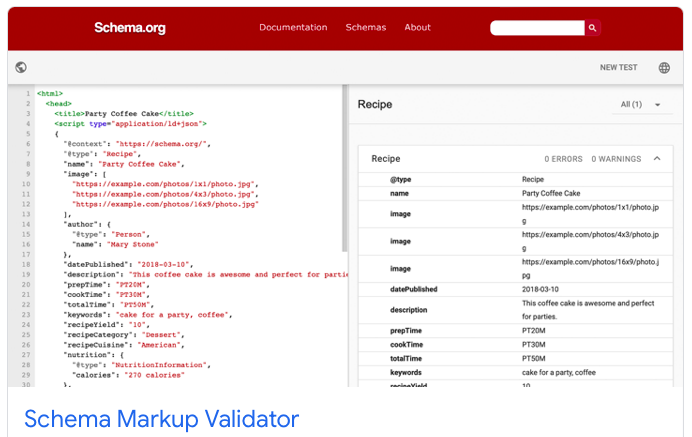
Schema markups are increasingly critical for SEO because they enhance search engine understanding and presentation of the website’s content.
By implementing schema markups, websites can achieve rich snippets in search results, increasing visibility, attracting more clicks, and improving organic traffic.
Schema markups also help search engines display more relevant and informative results, providing a better user experience.
Consistency is mandatory for enduring SEO results!
So, let’s say that you have attended to all or even some of these steps – why does SEO then need consistent and ongoing effort to keep your website ranking high for the keyword terms that you would like to rank for?
Consistency and having a long-term vision are crucial for SEO because it is an ongoing and evolving process. Search engines value websites that consistently provide high-quality, relevant content and adhere to best practices.
Websites build trust and authority over time by maintaining consistency in content creation, optimization, and user experience.
A long-term vision allows for strategic planning, implementation of sustainable SEO techniques, and adaptation to algorithm updates. 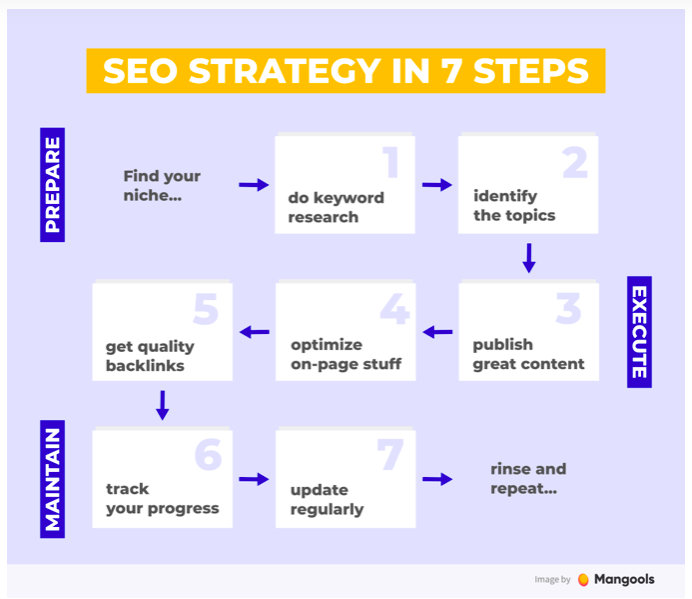
SEO results are not immediate; improving rankings and organic traffic significantly takes time. However, with consistency of effort, and a long-term vision, websites can establish a robust online presence, drive sustainable organic traffic, and stay ahead of competitors in a dynamic SEO landscape.
Finally, let’s go back to the example about exercising and physical fitness – if you decide to stop exercising, you will stay reasonably fit for a while before your fitness starts to deteriorate.
The same thing happens with SEO, except that while you have stopped your SEO effort, your competitors may not have stopped in sync with you. In fact, some of them may be supercharging their SEO just when you decide to cut SEO effort!
The results will be stark, and they will be quick. Search engines tend to be ruthless masters of their domains.
IN SUMMARY – THE SEO HIERARCHY OF STEPS
1. Crawl Accessibility – Do search engine bots find it easy to crawl your site?
2. Compelling content – Is your site’s content relevant to your niche, does it hold the attention of your website’s visitor, and most importantly does it help answer the searcher’s query?
3. Keyword optimization – Do the words on your page signal to search engines what the content is on each page? Are you using semantically relevant content and NLP that can unambiguously answer a specific search intent?
4. Great User Experience – Does your site load fast, is it easy to use and easy to navigate, is it responsive, and does it have a pleasing look and feel for the visitor to your site?
5. Shareable content – Will people like your content enough to link to share to it?
6. Titles, URLs & Meta tags – Do your pages have the Titles, URLs and Meta tags that have the keyword you want to rank for, and is the keyword presented in a way, that invites a click?
7. Schema Markup – Do you use Schema Markup which would make it easier for search engines to understand what’s on your page, and which could help you get ranked in a featured snippet?
Need us to help? Experdent is a leading Canadian Search Optimization company for dentists. Get in touch.
Read this post on Linkedin
#SEO, #DentalSEO






